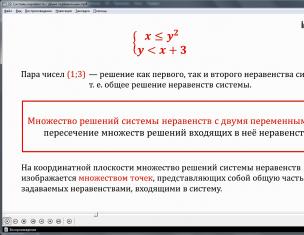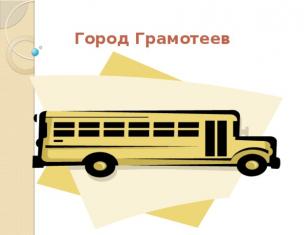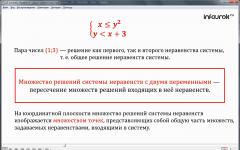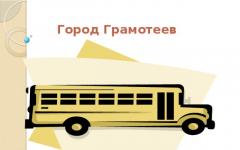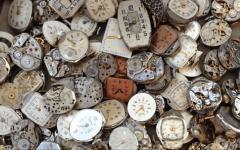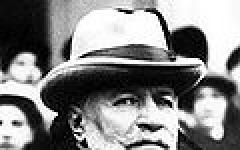Much has been written about how important it is to be able to let go and complete the old and outdated. Otherwise, they say, the new one will not come (the place is occupied), and there will be no energy. Why do we nod when reading such articles that motivate us to clean, but everything still remains in its place? We find thousands of reasons to put aside what we have put aside and throw it away. Or don’t start clearing out rubble and storage rooms at all. And we already habitually scold ourselves: “I’m completely cluttered, I need to pull myself together.”
Being able to easily and confidently throw away unnecessary things becomes a mandatory program for a “good housewife”. And often - a source of another neurosis for those who for some reason cannot do this. After all, the less we do “right” - and the better we can hear ourselves, the happier we live. And the more correct it is for us. So, let’s figure out whether it’s really necessary for you personally to declutter.
The art of communicating with parents

Parents often love to teach their children, even when they are old enough. They interfere in their personal lives, advise, condemn... It gets to the point that children do not want to see their parents because they are tired of their moral teachings.
What to do?
Accepting flaws. Children must understand that it will not be possible to re-educate their parents; they will not change, no matter how much you want them to. Once you accept their shortcomings, it will be easier for you to communicate with them. You will simply stop expecting a different relationship than you had before.
How to prevent cheating

When people start a family, no one, with rare exceptions, even thinks about starting relationships on the side. And yet, according to statistics, families most often break up precisely because of infidelity. Approximately half of men and women cheat on their partners within a legal relationship. In short, the number of faithful and unfaithful people is distributed 50 to 50.
Before we talk about how to protect a marriage from cheating, it is important to understand
Breathing: theory and practice

Theory
It is important to understand that natural human breathing is calm, measured and deep breathing from the stomach. However, under the pressure of the modern high-speed rhythm of life, a person accelerates so much that he literally cannot breathe. In other words, a person begins to breathe quickly and shallowly, as if suffocating, and at the same time use the chest. This type of chest breathing is a sign of anxiety and often leads to hyperventilation syndrome, when the blood is oversaturated with oxygen, which is expressed in the opposite sensation: it seems to you that there is not enough oxygen, from which you begin to breathe even more intensely, thereby falling into a vicious circle of anxious breathing .
Relaxation: theory and practice

Theory
Frequent, long-term, intense emotional experiences cannot but affect our physical well-being. The same anxiety always manifests itself in the form of muscle tension, which, in turn, sends a signal to the brain that it is time to worry. This vicious circle arises because the mind and body are inextricably linked. Being “educated” and “cultured” people, we suppress, and do not show (do not express, do not express) emotions, due to which the resulting muscle tension is not spent, but accumulates, which leads to muscle clamps, spasms and symptoms of vegetative-vascular dystonia. Paradoxically, it is possible to relax tense muscles through short but quite intense tension, which promotes better muscle relaxation, which is the essence of neuromuscular relaxation.
Dividing a whole into parts is an important area in preparing preschoolers for computational activities, the ability to understand the meaning of problems and in solving them. With the need for division children preschool age collide very early - in everyday life, game. For example, who among us has not shared an orange, tangerine, apple, etc.
Or, all children know that they have different toys, they take the necessary toy and act with it. In theory, this means that they have allocated a certain part of the toys. But this does not mean at all that they know how and can divide the whole into parts.
Dividing a whole into parts of a task
Pedagogical experience suggests that without targeted training By dividing the whole into parts, preschoolers will not develop the concepts of “whole” and “part.” If you take a deeper interest in this topic, it will become clear that the process of familiarizing children with dividing a whole into parts in a preschool educational institution consists of three main tasks:
- Dividing a set into subsets;
- Practical division of objects into parts by folding, cutting, based on measurement, etc.
- Obtaining a whole from parts, i.e. establishing relationships between part and whole.

When solving the first problem - dividing a set into subsets - adults simply generalize the practical skills of children, helping them practically combine many objects into one whole and showing how this can be done. For example, collect 8 toys: 4 pyramids, 4 cars, put them in one box and make a generalization - “toys, only 8 pieces, take the pyramids,” then ask: “what is more: pyramids and cars combined or just pyramids? » In this case, the parts will be 4 pyramids and 4 cars. Each part is smaller than the whole, since there were 8 toys in the box, and there were 4 cars left. Almost all children know how to do this, but verbal conclusions must be taught and reinforced in practice in everyday life, play, and work.
Teaching children to divide into parts
Teaching preschoolers to divide a whole into parts almost always goes unnoticed, but they understand what they are required to do and internalize this requirement.

An example, in everyday life - you have a set of vegetables for a salad (many), ask your child to arrange the vegetables into groups (subsets): cucumbers, tomatoes, lettuce, etc. Ask your child to select from this set, for example, tomatoes that make up one part of the salad. Ask: “What is more than a tomato or other salad parts combined?” Next, say the conclusion - the vegetables for the salad are one whole, and the tomatoes are a part that should be put in the salad with other vegetables. In exactly this way, you can teach how to distinguish some dishes from the total quantity, pieces of furniture, work equipment, etc.
Dividing a whole into parts is a game like “collect a bouquet for your mother (grandmother, sister).”
Many flowers are one whole (bouquet), let your son or daughter single out, say, asters from this set. Conclusion: a bouquet is a “whole”, asters are a “part”. If the bouquet consists of one type of flower, then the flowers are distinguished by color. For example, select red ones from a bouquet of gladioli.

The bouquet is the “whole”, the red flowers are the “part”. A didactic game with dolls will help you solve all your problems. For example, the doll Natasha came to visit the doll Katya, and Katya only had one piece of cake (one apple, pear, pancake, etc.). What should you do to treat Natasha? The answer is obvious, and an adult will suggest the conclusion. Experience suggests that dolls must be selected to be of equal attractiveness. In the practice of kindergartens, there were cases when children divided pieces of different sizes and gave most of the treats to a doll that was more attractive in appearance.
The sequence of dividing a whole into parts
The practical sequential division of a whole into two parts occurs first, as a rule, using the example of geometric flat figures by folding them in half (2 equal parts), then the halves are divided in half, etc.
In this case, it is necessary to strictly ensure that children bend the shape correctly, placing one half on top of the other. The division process itself occurs by tearing the whole or cutting with a stationery knife or scissors. In this case, the adult needs to ensure that the form given to the child is divided equally. There is one more point that should be paid special attention to: children usually say not “in half”, but “in half”, and their parts often turn out not equal, but even, since they strive to do the work neatly and often trim off unevenness. Therefore, you should pay attention to the child’s speech and the correct use of mathematical terms. Exact Science requires precise designation of the results of an action. Various strips, ribbons, etc. are divided according to the same principle.

Next comes training in composing a whole from parts and emphasis is placed on the concepts of “whole” and “part”. At this stage, it is important to show children how a part relates to the whole: the part is less than the whole, and the whole is greater than the part. This is best learned in practice: children are given, say, 2 circles - one is divided into parts, and the other remains whole. By applying a part of a circle to the whole, we find out that the part is smaller than the whole and vice versa. When children understand the relationship between the whole and the part, they are asked to make a whole object into a circle (square, rectangle) from the parts, counting its parts. Together with adults, they learn and clarify that the number of parts varies; the more parts, the smaller the parts themselves. Later, offer the kids geometric mosaics, which, by the way, children love to play with. Please note that flat objects that cannot be bent. A piece of tape, a strip of paper of the required length, etc. can serve as a conditional measurement. If you have not divided the object into equal parts, then, by applying the parts to each other, clarify which part is larger and which is smaller and add these parts so as to get the whole object. The conclusion suggests itself - an object can be divided into unequal parts, but then it cannot be said that it is divided equally. We simply say: “We divided the circle into 2 (4,8) parts.”
Question: What does this knowledge give to preschool children? Is it necessary to give the concepts of whole and part? Yes, it is necessary. Teaching children to divide a whole into parts allows them to see the relationship between the whole and the part and learn the pattern in things and phenomena that are hidden for the direct perception of objects (looking at a square, we don’t think that it can be divided, and having divided a square, we perceive it already by -to another). In addition, knowledge of the relationships between the whole and the part contributes to the formation of logical thinking and the ability to find causal connections, judge based on the results of the initial data. In a word, it will have a broad general developmental effect.
Didactic games for dividing a whole into parts
Dividing a whole into parts kindergarten secured with didactic games. These same games are good to use at home. 
- Put together a picture from parts - you can play with geometric shapes, you can collect cut-out pictures, plots, etc.;
- Assemble a figure - figures of different shapes, colors or patterns;
- Place the dishes in their places” - best used when setting the table, playing with a doll;
- Find the extra one - for example, we divide a circle, and there is also part of a triangle or other figure;
- Equal share for everyone – dividing apples, cake, pancakes, etc.;
- Connect the parts and you get the whole;
- Whose face? – drawing up cut-out pictures;
- Modeling animals - we sculpt an animal from parts;
- “Place the boards”, “In which box?”, “Who’s first?”, “Place them in order”, etc.
Kornaukhova T.A., teacher of MBDOU TsRR-DS No. 53 "Yolochka" Tambov
Subject: "The Whole and the Parts"
Target:
- Introduce the concept of whole and parts.
- Form an idea of addition as combining parts into a whole.
- Develop logical thinking through mathematical operations.
- Cultivate interest in the subject “Mathematics”.
Progress of the lesson:
I. Introduction to the game situation.
Teacher:- Guys, today we will go on an exciting journey by train. Make yourself comfortable and let's go. Chug-chug-chug. Too-too-too.
“Our magical locomotive
Sent forward
And we'll see, guys.
Where will he take us?
2. Motivational game.
Teacher:
Our train stopped.
Where have we ended up? (to the forest, to the magical edge)
Look guys, what is this? (mushrooms).
What kind of mushrooms are these? What's it called? (white and boletus).
What rules for picking mushrooms do you know? (you cannot pick mushrooms by the roots, you can damage the mycelium, you need to carefully unscrew the mushroom, or cut it with a knife, leaving the root of the mushroom).
What time of year is it? (autumn)
What do animals do in the fall? (preparing for winter).
Look who it is? (these are hedgehogs).
They went into the forest to prepare food for themselves.
Let's help the hedgehogs collect mushrooms and put them in the basket.
Rita will add porcini mushrooms, and Igor will add boletus mushrooms. And together we will count how many mushrooms Igor and Rita will put in the basket.
How many porcini mushrooms did Rita put in the basket? (2)
How many boletuses did Igor put in? (3)
How many mushrooms did Igor and Rita put in the basket? (5)
How did you get "5" (2 and 3)
Where did the mushrooms go? (add to cart)
What word can replace the word “folded” (put, combined).
Conclusion: The action we performed is called addition in mathematics.
Well done. Sit on the stumps (chairs), let's work with geometric material.
3. Difficulties in the game situation
Working with geometric material
Teacher:
Place 2 triangles in the first bag and 3 circles in the second bag.
Check what's in the first bag? (2 triangle)
What's in the second bag? (3 mugs)
Place these figures in one common bag.
How many figures are there in the bag? (2 triangles and 3 circles)"5"
What did we do with the figures? (collected, folded, combined into one big bag).
Let's repeat it again:
What was in the first bag? (2 triangles)- This is the first part
What was in the second bag? (3 laps)- This is the second part.
What have we done? (all figures combined into a whole). Which mathematical operation Are we done with the figures? (addition).
How to get a whole from parts?
Conclusion: To obtain a whole from parts, the parts must be combined or added together.
Teacher: - We brought you out important rule addition. To add, it is not necessary to pour all the figures into one bag; between the parts you can put a mathematical sign that shows the addition of the parts.
Does anyone know what this sign is called? (plus +).
Find and show the addition sign.
Place it between the two pieces.
We received two amounts.
Are they equal?
What's on the left? Right?
On the left are 2 triangles and 3 circles and on the right are 2 triangles and 3 circles
So the amounts are equal?
What sign should we put up? (sign =)
Find this sign and put it there.
Physical education minute
The hedgehog walked - walked - walked
He found a white mushroom
One is a fungus, two is a fungus,
I put them in the box
4. Consolidation, application of new material.
Teacher:
Guys, what else do hedgehogs store for the winter, besides mushrooms? (forest apples).
Our hedgehogs went into the forest for apples.
Count how many apples the hedgehogs collected.
Name the first part, the second part, the integer value.
5. Repetition and developmental tasks.
Teacher:- Not only hedgehogs live in our clearing, but also other inhabitants. Come up with a name for this picture. It seems to me that someone is superfluous here. Who do you think it is? (children's answers).
6. Physical education minute
In the morning along a forest path.
Stomp-stomp feet stomp
Walks, wanders, along the paths
Old hedgehog covered in needles
Looking for apples and mushrooms
For my son and daughter.
7. Hatching.
Teacher:- It’s getting dark in the forest, so that our hedgehogs can find their way home, let’s light magic lanterns for them in the forest.
8. Working with puzzles. Work in small groups .
Teacher:
Where have we been today? (in the forest)
Who did you meet? (hedgehogs)
- The hedgehogs returned home, and they left you a task. (2 envelopes)
Task for the first group, for the second group.
9. Reflection.
Teacher:
What mathematical operation did we perform with mushrooms, apples, geometric shapes? (children's answers)
What mathematical sign shows that we have combined parts into a whole? (children's answers)
Where in life can our knowledge be useful? (children's answers)
This is where our journey ends, get comfortable on our train, we are returning to kindergarten.
ANGELA BATYROVA
"Part and whole." Math lesson notes for the preparatory group
Abstract
Math classes. Preparatory group.
Educator: Batyrova A.V. MKDOU No. 22
Program content.
1. Children’s mastery of substitution actions « parts» And « the whole» using strips of different sizes.
2. Development of children's ideas about affirmative sentences.
3. Development of children's ideas about the days of the week.
Material: Matryoshka, apple, knife
Dispensing material: Cards with days and weeks written on them, strips, digital fans.
Progress of the lesson:
First Part
Educator: Guys, the postman handed me a letter this morning. Let's see where this letter comes from. They sent us a letter from the city of Tsifrograd. And when they sent us a letter on February 1st. What's the date today?
Educator: How many days did it take for the letter to reach us, let’s count it.
Children: 5 days.
Educator: What day of the week is it today?
Children: Tuesday.
Second Part
Game "name the day of the week"
Educator: Now let's guys play a game.
Children are given cards with the names of the days of the week. The teacher asks you to go to the board "first day of the week", Monday, then next "day of the week" asking what it is called, then again the next one, etc. When everything "days of the week" lined up, the teacher asks to raise his name (jump, sit down, stand on tiptoes) "day of the week", which comes after something or before something. Then we invite all the children to disperse and, at the signal, stand again one after another, starting the row, for example, from Tuesday (Wednesdays, Fridays).
Educator: Well done guys, take your seats. Guys, let's see what's in the envelope and who wrote the letter to us.
I'm reading a letter: Hello guys, group No. 9. Znayka is writing to you from the city of Tsifrograd. In our city we learned that you are very smart guys, you think well. Just try to solve my problems. Best regards, Znayka.
Third Part
Task No. 1. Two numbers - 1 and 3, quickly add them and tell the answer (4)
Problem No. 2. 4 are sitting on a tree birds: 2 sparrows, the rest crows. How many crows (2)
Problem No. 3. There were 4 apples on the table. One of them was cut in half and placed on the table. How many apples are on the table? (4)
PHYSMINUTE.
Fourth Part
New topic
Educator: Guys, here is an apple in front of us - it whole, and now I’ll cut it and get 2 unequal pieces - this is parts. So connecting 2 parts of an apple make a whole, and when I disconnect it turns out 2 apple parts. There are 2 stripes in front of you, one long strip is whole, and 2 smaller ones are parts. Tell me, what kind of apple is it?
Children: Whole.
Educator: Show us which stripe we use.
Children: Alone.
Educator: Guys, when do I separate the apple? What are we doing?
Children: 2 parts.
Educator: Show me which stripe we use?
Children: Two.
Educator: Guys, look what this is?
Children: Matryoshka.
Educator: What kind of matryoshka doll?
Children: Whole.
Educator: And if I split it, what will we get?
Children: 2 parts.
Educator: These parts what stripe do we indicate?
Children: Two stripes.
Educator: And when is it whole?
Children: Alone.
Educator: Well done!
Fifth Part
The teacher says several sentences. He says that there are such sentences when they ask something, ask a question, For example: “How old are you? Are you 5 years old? These are interrogative sentences. And there are such proposals when just something They say: “You are 6 years old. Your name is Olya." The teacher says what he will call different offers. When the sentence is interrogative, the children will raise a sign like this (shows a question mark, it’s called "question mark" when non-interrogative (other types of offers are not named)- do not lift anything. Each time after completing the task, children are asked to explain why the sentences are interrogative or non-interrogative. “In an interrogative, something is asked, in the intonation of the voice there is a question, they want to know something, ask.
Problem No. 4. 7 candles were burning. 2 candles were extinguished. How many candles are left?
Analysis: What did you learn today at class? What have you learned?
Encouragement. Guys, let's make a circle. We celebrate the day of love in mid-February, let us now join hands and give warmth and love to each other. And now to our guests and I will give you guys my warmth and love, (music plays, I hand out valentines).
Target: Reinforcing with children the counting of objects located in a circle: the composition of the number 7 (from units) by increasing the number by one; continue familiarization with dividing figures into equal parts, consolidate the concept of “half”, “quarter”; develop fine motor skills, logical thinking, consolidate children's knowledge about the seasons, develop imaginative thinking. Develop independence, the ability to understand a learning task and complete it independently.
Cultivate interest in mathematical studies.
Equipment: schematic images of the main fragments, geometric shapes for each child, a flower - seven flowers, didactic material for each child: “Composing a whole image from parts”, pencils, felt-tip pens, video film.
Progress of the lesson
Division into subgroups:
Organizational moment
(music is heard)
Along snowy paths
A fairy tale goes unseen
Do you hear, a fairy tale has come to us
Hush, hush, here she is...
Guys, do you love fairy tales? Do you want to visit a fairy tale yourself and meet the characters? Today I will introduce you to a fairy tale called “Flower - Seven Flowers”. And the heroine of this wonderful fairy tale is the girl Zhenya. And here she is!
Show video
Consolidation of knowledge
Well, as always! Zhenya is counting crows, which means that she is not very attentive, she even lost the bagels.
Are you guys attentive? I'll check on you now! This game is a test: “True or False” will help correct mistakes.
If you hear what you think is correct, clap your hands, but if you hear something that is not correct, clap your hands.
In the morning the sun rises;
You need to do exercises in the morning
You can't wash your face in the morning
The moon shines brightly during the day
How many times do you need to fold a circle to divide it by 2 (4.8) equal parts?
If a circle is folded in half 1 (2.3) times, how many pieces will it be?
At night people have dinner
There are 7 days in a week
Wednesday follows Monday
After Saturday comes Sunday
Thursday is before Friday
Spring comes after summer
Educator: - Guys, look, what geometric figure do you see?
Children: Circle
Educator: Look what wonderful flowers you can make from this figure. Try it! What other geometric shapes do you know?
Guys, how can we help Zhenya? I know one magical flower whose petals make any wish come true. Where can I find it? I know one garden in which Tsvetik grows - seven-flowered? Each of you has a scheme. Using this diagram, you must determine the path to the seven-flowered flower. And for the correct answer I will give you petals.
Game: “Find the path and shade the petals”
Did everyone complete the task? The path led us to a flower.
Show video.
Why is it called that?
Children: Seven petals of different colors. (fix the account).
Show video.
Game: “Repeat the words”
- Young guys! Well, now let’s help Zhenya find herself at home with the steering wheels. The second task before you is to color as many bagels as the girl Zhenya had. And I’ll give you a hint, and you count and bend your fingers.
Mom Zhenya sent to the bakery for bagels and asked to buy:
1 bagel for grandma,
1 bagel for grandfather,
1 bagel for mom,
1 bagel for dad,
1 bagel for brother,
1 bagel for yourself.
How many bagels should Zhenya buy in total?
Children: Zhenya must buy 6 bagels.
Educator. Right. Color the bunch of bagels with the required number of yellow pencils.
Now let's check if you completed the task correctly?
Show video.
Well done guys! Did a good job. And the girl Zhenya is happy too. And Zhenya decided to put a flower in her mother’s favorite vase.
Show video.
Guys, Zhenya’s girl urgently needs help.
Which vase came first? (whole)
what happened then?
Look, in the lower right corner there is a new task.
Let's finish drawing the vase so that it becomes whole. If you completed the task correctly, a miracle will happen.
Show video.
In the summer, Zhenya and her friends played in the sandbox.
But she suddenly really wanted to be at the North Pole. Do you remember what words she said? Let's remember:
Fly, fly petal,
Through west to east,
Through the north, through the south.
Come back, having made a circle,
As soon as you touch the ground,
To be according to my wishes.
And Zhenya ended up at the North Pole.
Tell me, what time of year did Zhenya miss? (children's answers).
Educator: That's right, Zhenya missed Autumn!
Color the time of year that Zhenya missed.
Game: “Find the time of year”
Show video .
New topic
Guys, look so far we have helped Zhenya, polar bear tore my petals to pieces. How many whole petals do I have left? Invites you to assemble a flower from several parts.
Game: "Collect a flower."
Questions for children:
- What parts are missing?
Compare, is a quarter more or less than a half?
Compare, is half more or less than the whole part?
Find where these parts are located?
Well done guys! We collected all the petals from the parts and made them whole. Well, we have a whole meadow of wonderful flowers.
But you and I forgot about our girl Zhenya.
Show video.
Show video. Physical education minute. (musical)
Once - rise, stretch,
Two - bend over, straighten up,
Three - three claps of your hands,
Three nods of the head.
By four – your arms are wider.
Five - wave your arms,
Six - sit down quietly.
Pinning a new topic
game: "Flower - Multicolor"
Tell me if a flower had 8 petals. What would you call it?
Children: “Flower - Eight Flowers.”
Educator: If there are 9 petals? 10 petals?
Children's answers.
Secure forward and backward counting to 10 and back.
Let's make our own multi-colored one.
What good deeds have we done today? (children list) Tell me what was the last wish the girl made? Did she do the right thing? Will you and I still strive to do good things?
Well, you and I have unraveled the mystery of the “Miracle Flower”, where each petal contained extraordinary entertaining tasks.
- Let's remember what tasks we solved.
Children: We helped Zhenya count the bagels.
We found and determined the road to “Tsvetik – Semitsvetik”.
We completed the second half of the vase.
We collected a whole clearing of wonderful flowers.
Reflection
Show video.
If you liked our lesson, choose a petal according to your mood, if you were not interested, then take a black petal, and if you were interested, everything was clear to you, then choose bright colorful petals. Now you need your petals and glue. Take turns coming to the board and stick your petal near the circle that smiles at us.


